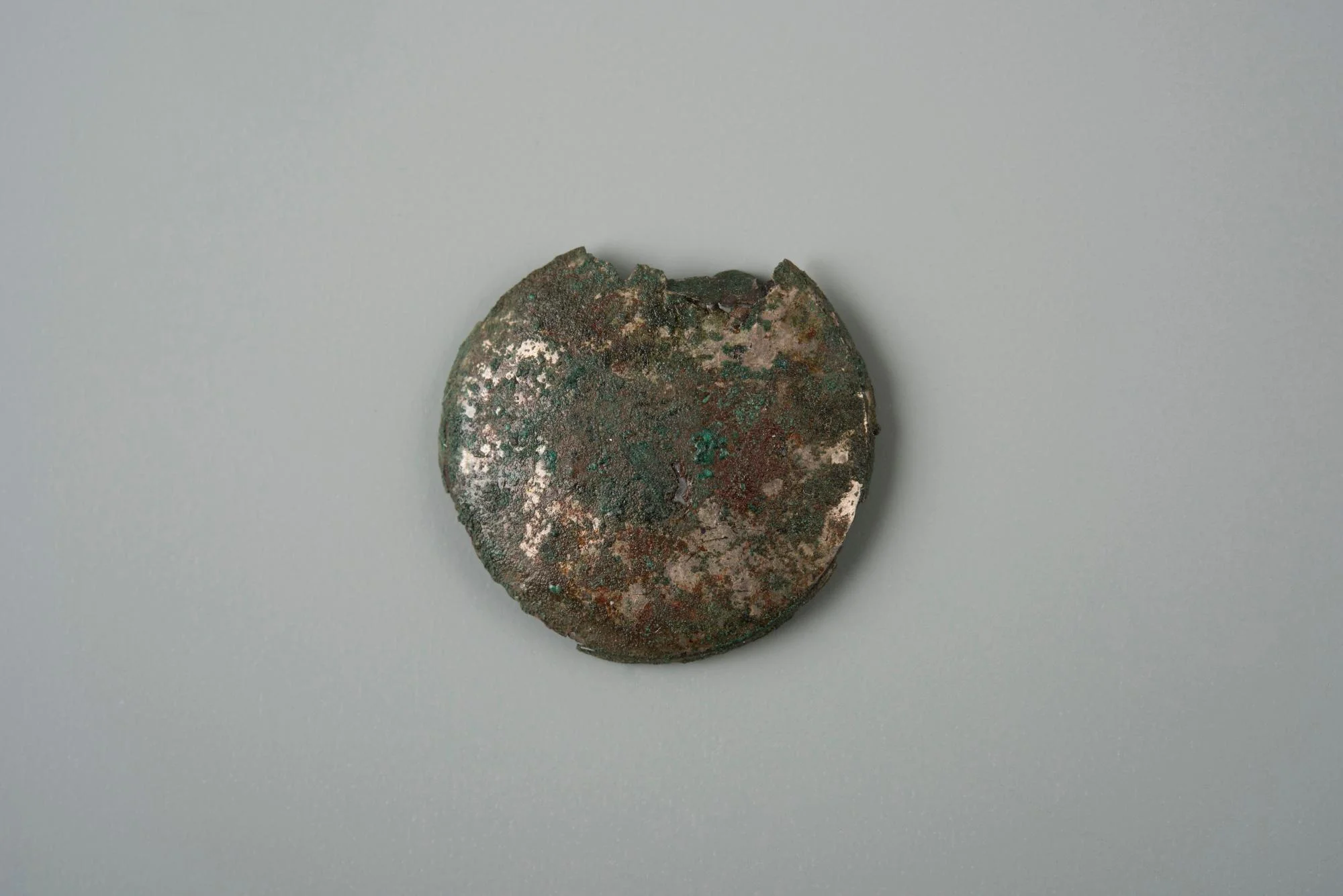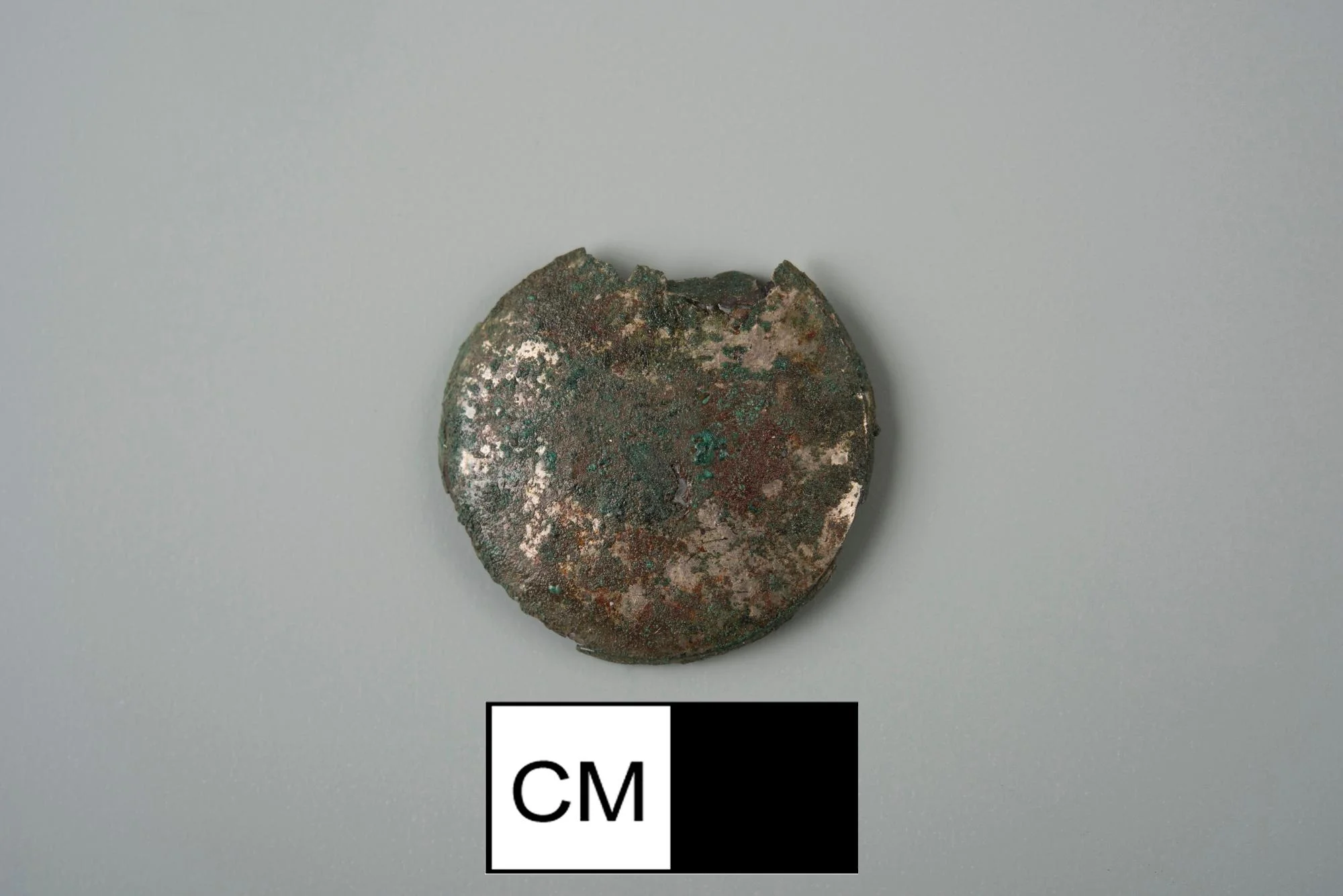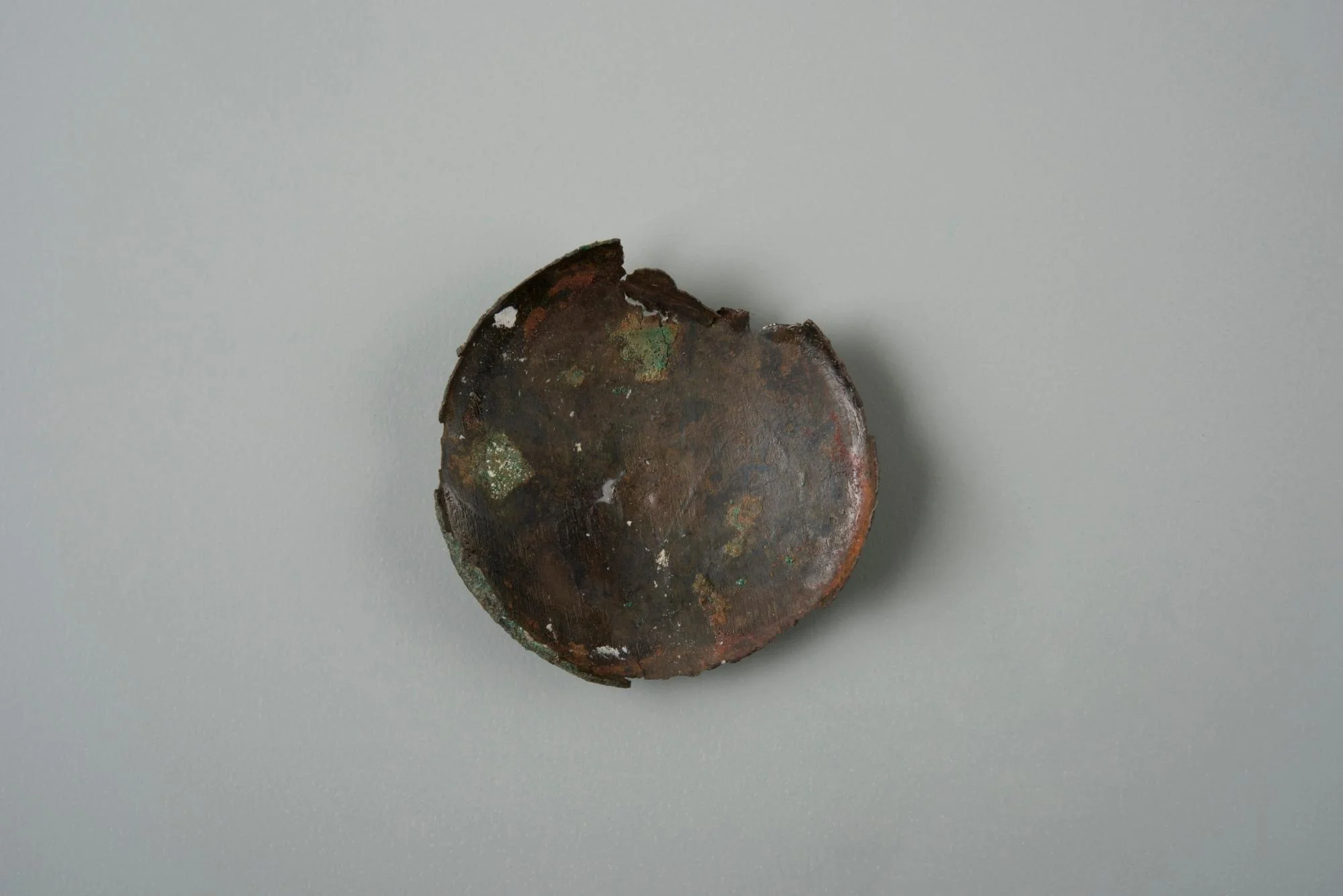Notes
This is the metal face, or front portion, of a two piece button. In this style of button, a disk of lathed bone with a beveled edge often served as a button back. The face of the button was commonly fashioned from a sheet of thin metal, usually a variety of copper alloy, cut into the approximate size circle, and formed in a molded cavity to achieve a slightly domed shape. The cover was then crimped onto the back along the beveled edge of the bone backing.
These copper alloy faced buttons were often embellished with various forms of decoration, among them plating. The Sheffield plating technique, developed in 1742, fused thin layers of silver or tin to copper sheets, but only on the surface that will eventually be the button exterior. The lack of silver color on the concave, or interior, side of this button face indicates this button was manufactured in this fashion.
In the eighteenth century, buttons came in a variety of shapes and sizes. Sometimes this variation can be used to identify which articles of clothing a button may have been used in the past. The diameter of this button suggests it was possibly for use on a coat.
Object Type
Has it Been Conserved?
Yes
Where Was It Found?
Project Site: House for Families [more details]
Material
Manufacturing Technology
Form
Shape
Completeness
Decorative Technology
Decorative Notes
Likely silver
Date
post 1742
Country of Origin
Dimensions
22.8mm x 0.22mm x 22.82mm (W x H x L)
Illustration shows object in comparison to the size of a quarter
Weight
0.3 gram(s)
Object Number
1788365
DAACS Number
1788365
Project: House for Families
The structure identified as the “House for Families” on the 1787 Vaughan plan likely housed the majority of the enslaved population living at the Mansion House Farm for much of the second half of the eighteenth century. The building was in existence from circa 1760 until it was demolished in late 1792 or early 1793. The archaeological evidence for the structure consisted of a brick-lined storage cellar (44FX762/40-47) measuring roughly six feet by six feet. Historically the cellar served as a handy trash receptacle once it ceased to be used for its original storage function, and through extensive excavation has yielded an extremely rich assemblage of household refuse. The analysis of these remains offers the opportunity to study important aspects of the daily lives of Mount Vernon's enslaved community.
See All Objects From this Dig


 Buttons
Buttons